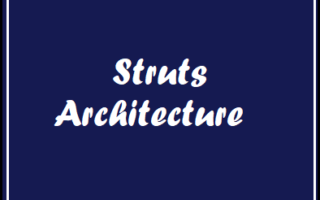Here you will find 100+ MCQs On Java Architecture. Basically, the following topics are covered in these MCQs.
- Evolution of Java
- Java Architecture
- JVM
- Adaptive Optimizer and Class Loader
- Components of JVM
Evolution of Java
- What year was the first version of Java released? a) 1995 b) 1997 c) 2000 d) 2003
- Who is credited with the creation of the Java programming language? a) Bill Gates b) Linus Torvalds c) James Gosling d) Steve Jobs
- Which of the following is not a primary goal of Java’s design? a) Platform independence b) High performance c) Object-oriented programming d) Native machine code compilation
- Which component of Java technology allows Java applications to be executed within web browsers? a) Java Development Kit (JDK) b) Java Runtime Environment (JRE) c) Java Virtual Machine (JVM) d) Java Applet
- In which version of Java were Generics introduced? a) Java 1.2 b) Java 5 c) Java 7 d) Java 8
- Which programming language influenced the syntax of Java? a) C++ b) Python c) Ruby d) Fortran
- What is the purpose of the “javac” command in Java development? a) To compile Java source code into bytecode b) To execute a Java program c) To generate Java documentation d) To debug Java applications
- Which edition of Java is used for developing applications for mobile devices and embedded systems? a) Java Standard Edition (Java SE) b) Java Enterprise Edition (Java EE) c) Java Micro Edition (Java ME) d) JavaFX
- Which Java feature allows a subclass to inherit the properties and behaviors of a superclass? a) Interfaces b) Inheritance c) Polymorphism d) Encapsulation
- Which version of Java introduced the “assert” keyword for testing assumptions in code? a) Java 1.2 b) Java 5 c) Java 7 d) Java 8
- What is the purpose of the “classpath” in Java? a) It specifies the location of the Java compiler. b) It defines the package structure of a Java program. c) It lists the directories or JAR files containing classes used by the Java program. d) It determines the execution order of methods in a Java class.
- Which release introduced the modular system, allowing the organization of code into modules? a) Java 8 b) Java 9 c) Java 10 d) Java 11
- Which Java version introduced the “var” keyword for local variable type inference? a) Java 8 b) Java 9 c) Java 10 d) Java 11
- What was the original name of the Java programming language? a) Oak b) Bytecode c) Duke d) Coffee++
- Which company originally developed Java before it was acquired by Oracle Corporation? a) Sun Microsystems b) Microsoft c) IBM d) Apple
- Which Java version made significant improvements to the Java Virtual Machine, including performance enhancements? a) Java 5 b) Java 7 c) Java 8 d) Java 9
- Which Java edition is primarily focused on providing tools and libraries for building server-side applications? a) Java Standard Edition (Java SE) b) Java Enterprise Edition (Java EE) c) Java Micro Edition (Java ME) d) JavaFX
- What is the main difference between the Java Standard Edition (Java SE) and the Java Micro Edition (Java ME)? a) Java SE is for desktop applications, while Java ME is for mobile applications. b) Java SE is focused on embedded systems, while Java ME is for web development. c) Java SE is the most feature-rich edition, while Java ME is optimized for resource-constrained devices. d) There is no significant difference between Java SE and Java ME.
- Which version of Java introduced the “Stream” API to simplify working with collections? a) Java 5 b) Java 7 c) Java 8 d) Java 9
- What does the acronym “JRE” stand for in the context of Java? a) Java Runtime Engine b) Java Reflection Environment c) Java Runtime Extension d) Java Runtime Environment
Answers
- a) 1995
- c) James Gosling
- d) Native machine code compilation
- d) Java Applet
- b) Java 5
- a) C++
- a) To compile Java source code into bytecode
- c) Java Micro Edition (Java ME)
- b) Inheritance
- b) Java 5
- c) It lists the directories or JAR files containing classes used by the Java program.
- b) Java 9
- d) Java 11
- a) Oak
- a) Sun Microsystems
- c) Java 8
- b) Java Enterprise Edition (Java EE)
- c) Java SE is the most feature-rich edition, while Java ME is optimized for resource-constrained devices.
- c) Java 8
- d) Java Runtime Environment
Java Architecture
The following link contains MCQs on Java Architecture.
https://www.programmingempire.com/20-mcqs-on-java-architecture/
JVM
The following link contains MCQs on JVM,
https://www.programmingempire.com/30-mcqs-on-jvm/
Adaptive Optimizer and Class Loader
The following link contains MCQs on Adaptive Optimizer and Class Loader.
https://www.programmingempire.com/adaptive-optimizer-and-class-loader/
Components of JVM
The following link contains MCQs on Components of JVM.
https://www.programmingempire.com/20-mcqs-on-components-of-java/
Further Reading
Getting Started With JUnit: A Beginner’s Guide
Spring Framework Practice Problems and Their Solutions
From Google to the World: The Story of Go Programming Language
Why Go? Understanding the Advantages of this Emerging Language
Creating and Executing Simple Programs in Go
20+ Interview Questions on Go Programming Language
100+ MCQs On Java Architecture
- Angular
- ASP.NET
- C
- C#
- C++
- CSS
- Dot Net Framework
- HTML
- IoT
- Java
- JavaScript
- Kotlin
- PHP
- Power Bi
- Python
- Scratch 3.0
- TypeScript
- VB.NET


In Java development, what is the significance of the “classpath,” and how does it impact the execution of Java programs?
The classpath indicates where the Java Virtual Machine (JVM) should look for classes and resources when executing a Java program.